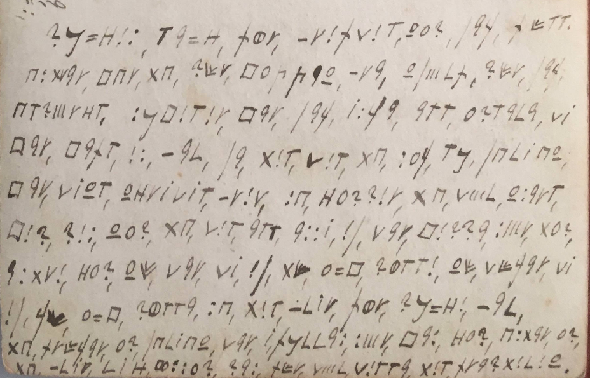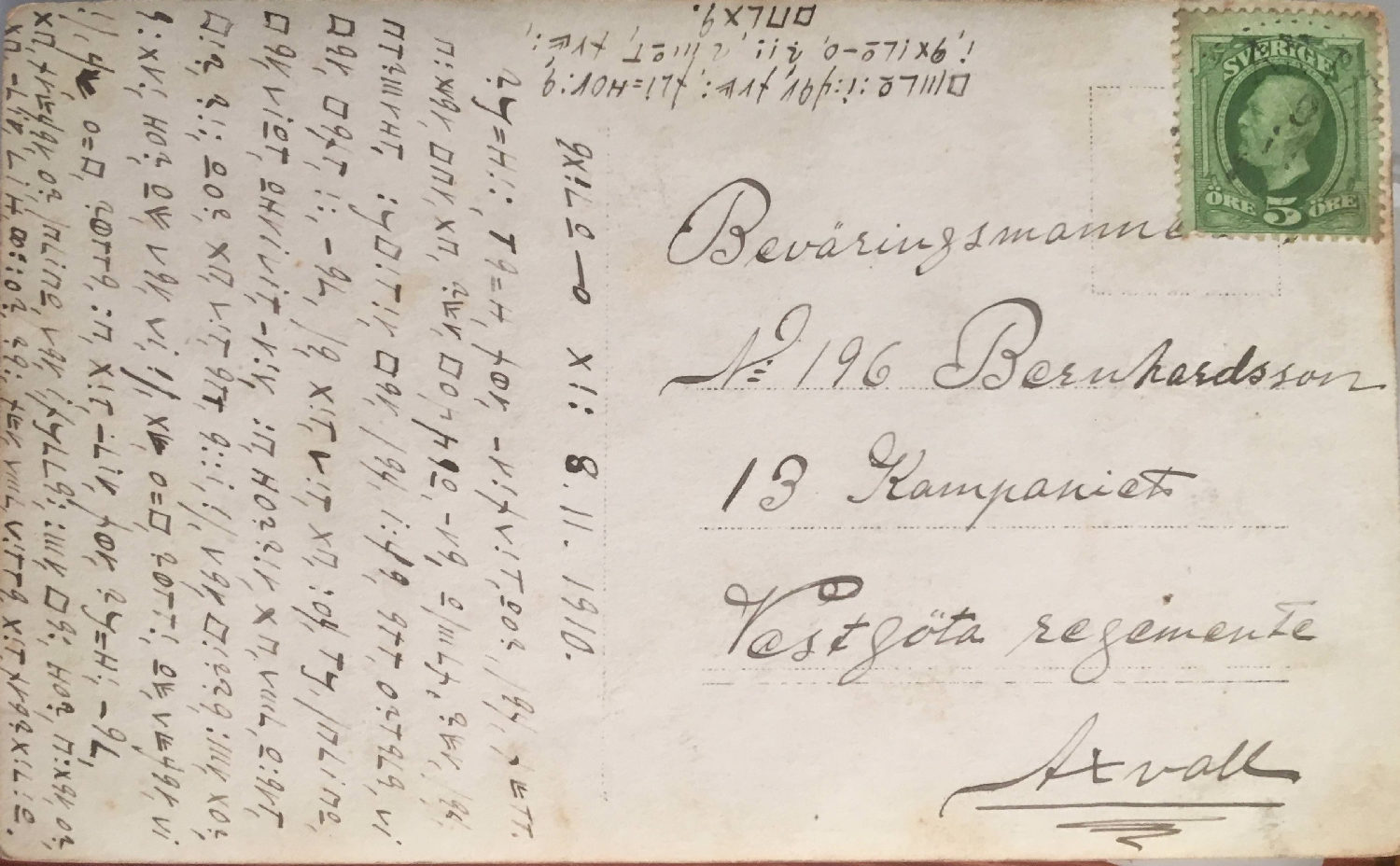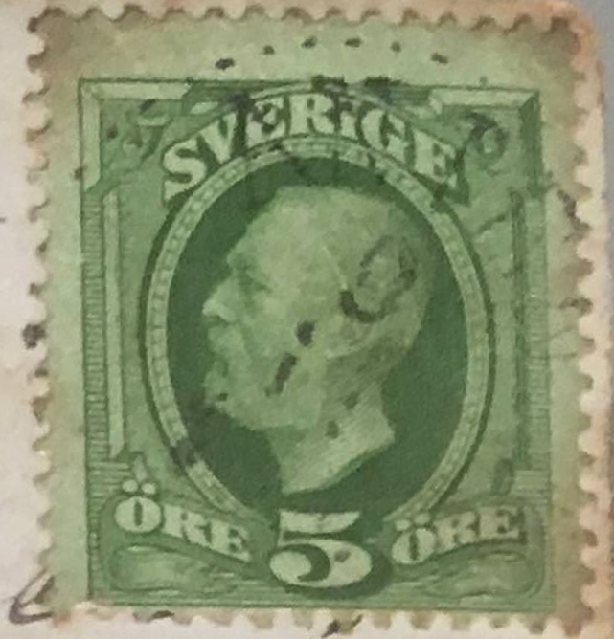A Reddit user has posted a postcard from Sweden written in 1910. Can a reader decipher it?
Once again, an interesting cipher mystery has been published on Reddit (thanks to David Allen Wilson for making me aware of it). This time the mystery is about an encrypted postcard that was written in 1910. Here it is:
The recipient of this card lived in Axvall, a small town in Southern Sweden. The recipient’s address starts with “Beväringsmann”, which is, in my view, not a name but a title (I didn’ find a translation on Google, however). The words “Kampaniet” and “regemente” suggest that the recipient was a soldier. “Bernhardsson” is probably not the name of the recipient but the name of a military unit or building.
While most encrypted postcards I have covered on this blog were written by young men to their spouses, this one appears to be an exception (of course, it is also possible that recipient was a woman who lived in a military base).
The name of the sender of the card is not mentioned in the clear. The place from where the card was sent is unknown, too. As far as I can see, the postmark on the stamp is not readable.
As the postcard was sent to a place in Sweden and as the stamp is Swedish, I assume that the message on the card was written in Swedish.
The cipher used is probably a simple one-to-one cipher (MASC). The spaces between the words are indicated by commas, which makes breaking the encryption easier. Altogether, I am pretty sure that this cryptogram is solvable. Can a reader decipher it?
Follow @KlausSchmeh
Further reading: Unsolved: A strange encrypted postcard from Newton, Iowa
Linkedin: https://www.linkedin.com/groups/13501820
Facebook: https://www.facebook.com/groups/763282653806483/






Kommentare (21)